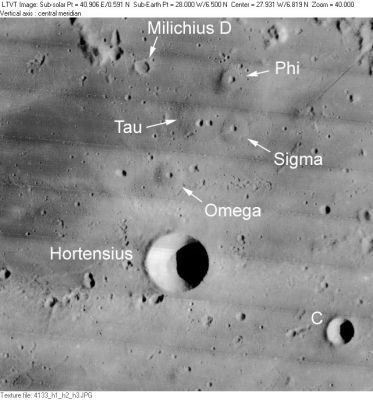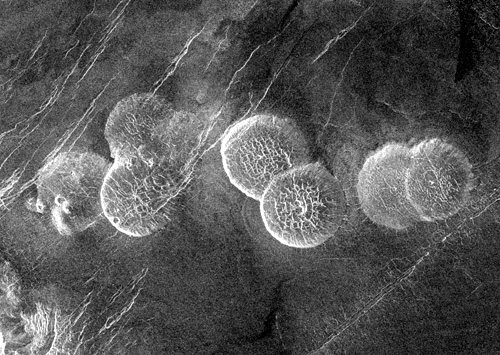Dome
Rounded volcanicIgneous rock that forms from cooling magma on the surface of a planet or asteroid. structure produced by eruption or intrusion of viscous high-silica magmaMolten silicate (rock) beneath the surface of a planetary body or moon. When it reaches the surface, magma is called lava.. Domes are common on Earth, but rare on the Moon. Lunar domes are mostly fairly small, few more than a few hundred meters high or more than 10-15 km across. They are also somewhat irregular in outline and few show any large central pit or vent structures, but many do have very small central pits or craters. Most lunar domes appear to be basaltic and not formed like Earth domes from silicic lavas. Instead, lunar domes may mark places where the erupted basalts were just barely molten and consequently had high viscosityThe degree to which a liquid resists flow. High-viscosity liquids (e.g., "molasses in winter") resist flow to a great degree. More formally, viscosity of a fluid is the measure of its resistance to gradual deformation by shear stress or tensile stress. Water has a low kinetic viscosity of 0.6959.


Some or all content above used with permission from J. H. Wittke.






